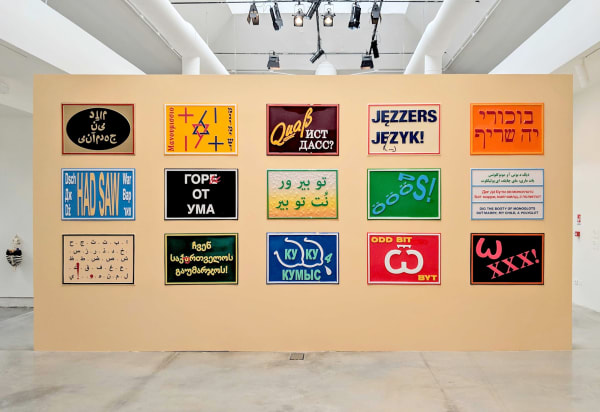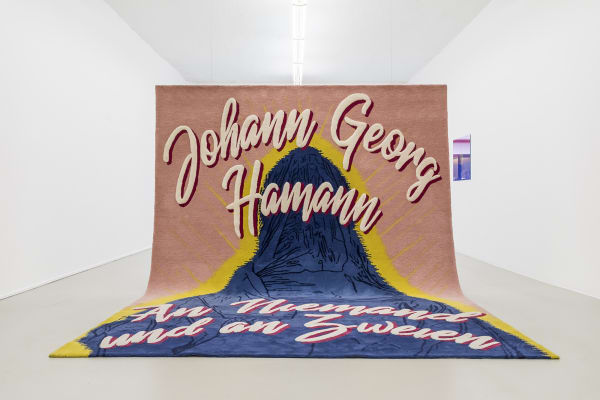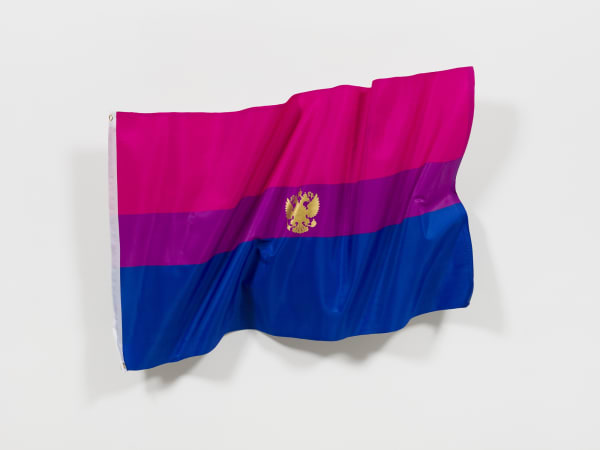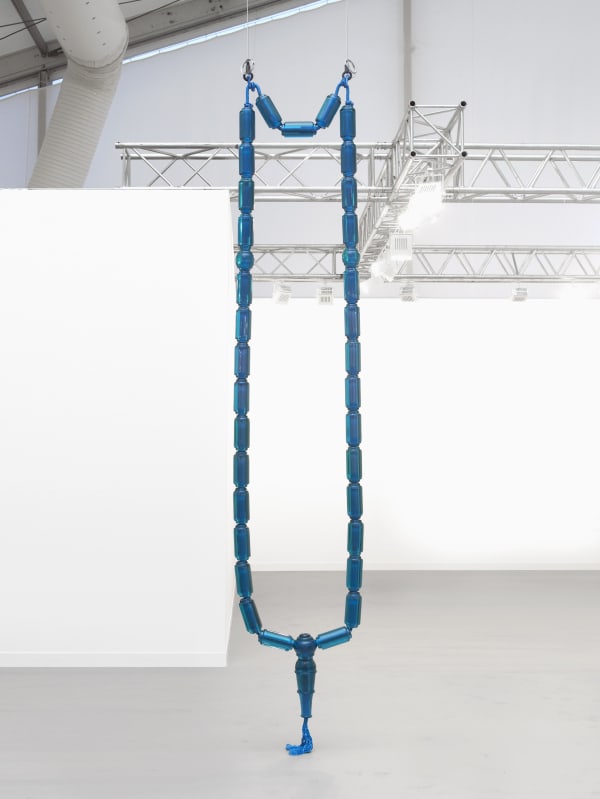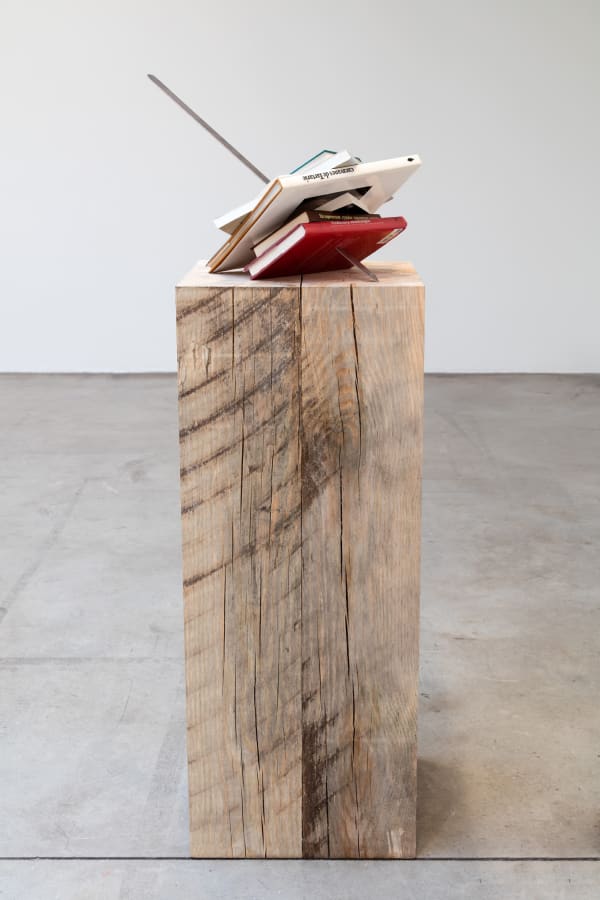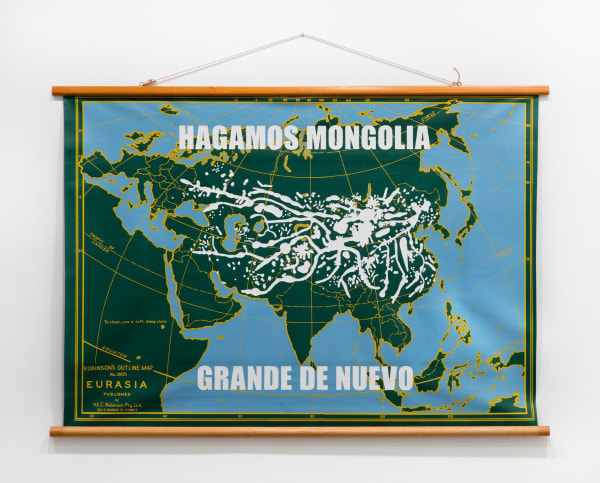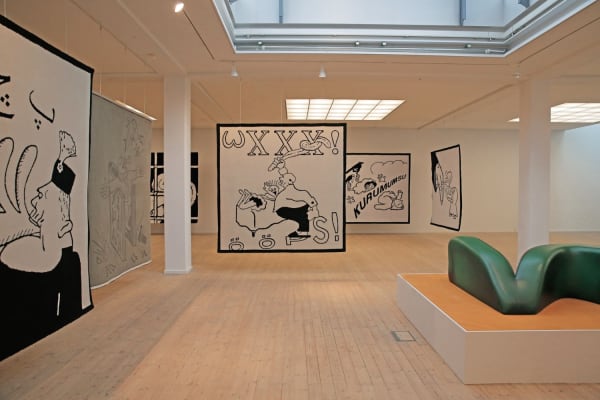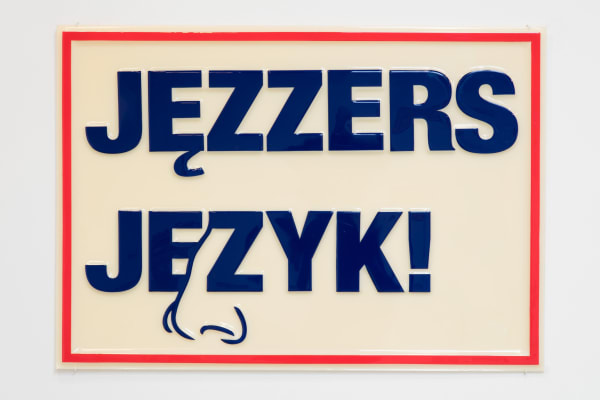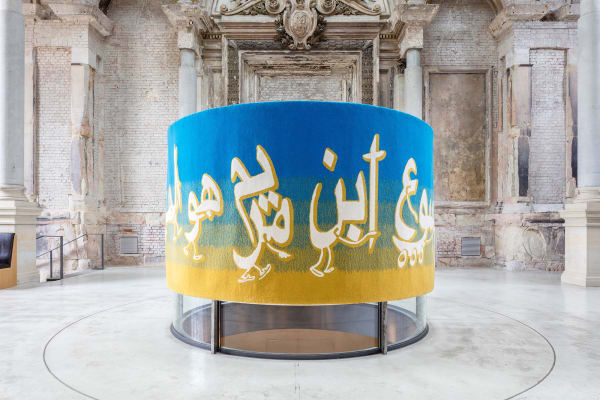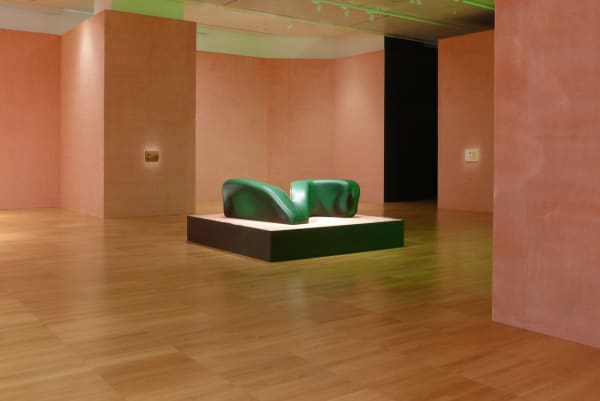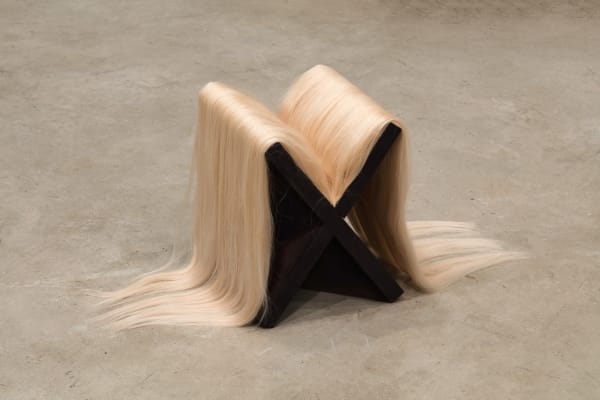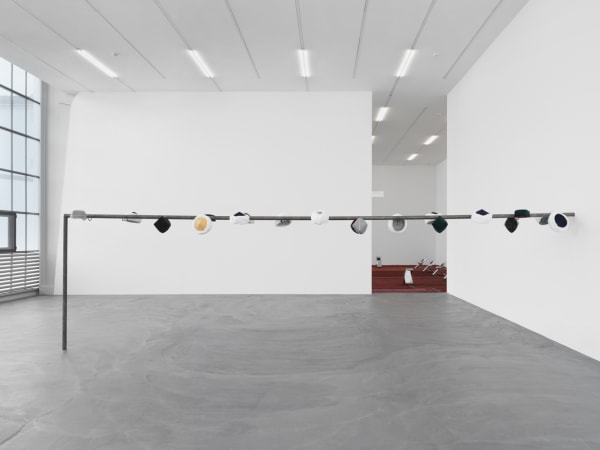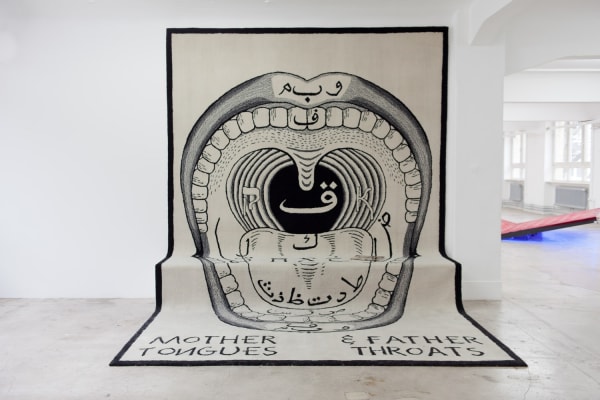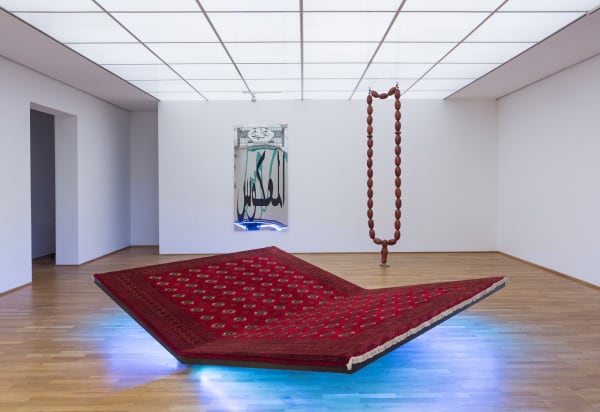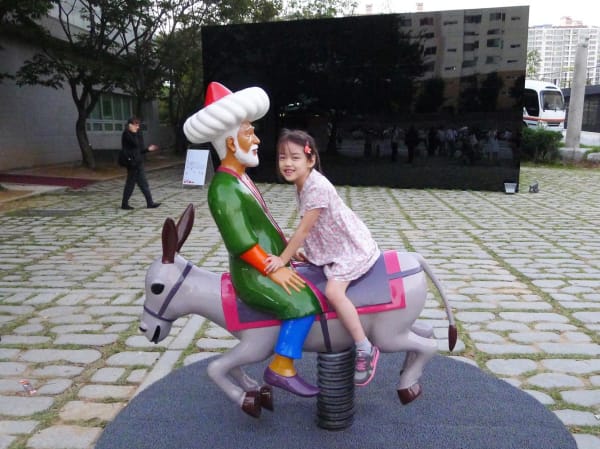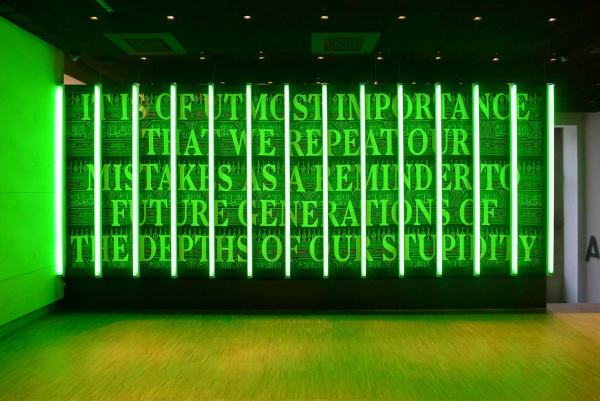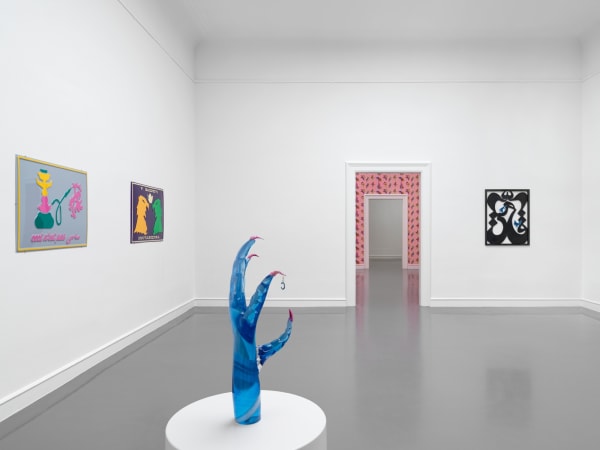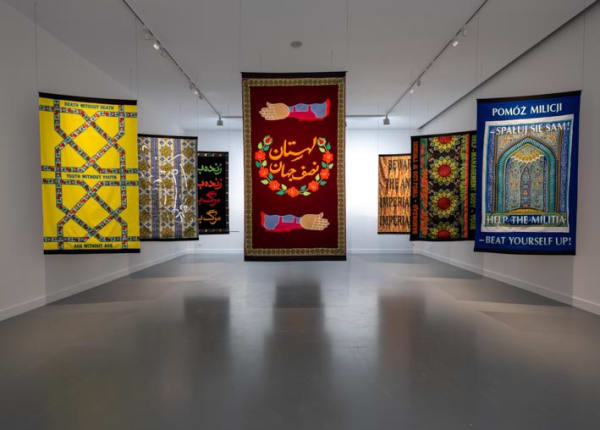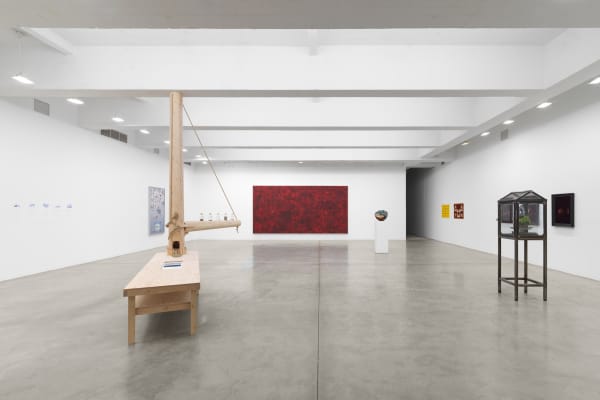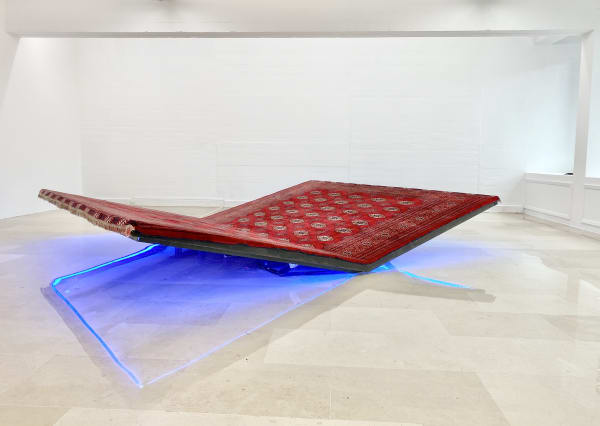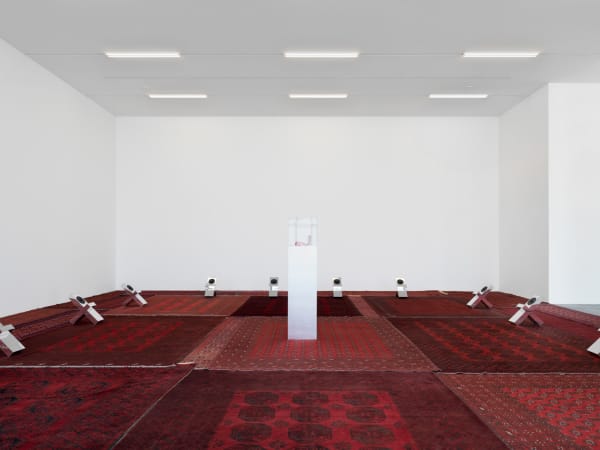Slavs and Tatars
Founded in 2006, Slavs and Tatars mine the complexities and unexpected affinities across cultures through publications, lecture performances, and installations. Originally set up as an informal book-club, the collective explores a literary and political geography known as Eurasia, defined by themselves as “east of the former Berlin Wall and west of the Great Wall of China”. The artists work across cycles, where extended periods of research give life to an eco-system of installations, sculptures, lectures, and printed matter that question our understanding of language, ritual and identity. In this context, viewers are invited to perform the "metaphysical splits" by trying to accommodate conflicting ideas and sensations drawn from opposite ends of the cultural, religious, historical, or emotional spectrum. Imbued with humor and a generosity of spirit, their work commonly blends pop visuals with esoteric traditions, oral rituals with scholarly analysis in a way that opens new paths of contemporary discourse.
-

Slavs and Tatars: Simurgh
Staatliche Kunsthalle Baden-Baden, Germany February 13 - May 17, 2025Read more -

Slavs and Tatars: Hang Don't Cut
Tanya Bonakdar Gallery, Los Angeles July 8 - September 9, 2023Read more -

Slavs and Tatars: Friendship of Nations: Polish Shi’ite Showbiz
M HKA, Museum of Contemporary Art Antwerp, Belgium January 23 - April 30, 2023Read more -

Fruiting Bodies
Tanya Bonakdar Gallery, New York June 23 - July 29, 2022Read more -

Slavs and Tatars - La Bataille des fruits
Centre Pompidou-Metz, France June 11 - August 29, 2022Read more -

Slavs and Tatars: MERCZbau
Neubauer Collegium Gallery, University of Chicago May 5 - October 7, 2022Read more -

Slavs and Tatars: Samovar
Hayward Gallery, London September 3 - November 4, 2021Read more -

Slavs and Tatars: Régions d’être
Villa Arson, Nice, France October 17, 2020 - May 16, 2021Read more -

Songs in the Dark
Tanya Bonakdar Gallery, New York January 11 - February 20, 2020Read more -

SLAVS AND TATARS
Sugar Contemporary, Toronto October 17, 2019 - January 31, 2020Read more -

SLAVS AND TATARS: MAY YOU LIVE IN INTERESTING TIMES
LA BIENNALE DI VENEZIA May 11 - November 24, 2019Read more -

PINE BARRENS
Tanya Bonakdar Gallery, New York June 21 - July 27, 2018Read more -

SLAVS AND TATARS: MADE IN DSCHERMANY
KUNSTHALLE IM LIPSIUSBAU, ALBERTINUM June 6 - October 14, 2018Read more -

SLAVS AND TATARS: HALLBADEREIEN / BATHHOUSE QUACKERIES
Westfälischer Kunstverein, Germany February 3 - April 15, 2018Read more -

SLAVS AND TATARS: MOUTH TO MOUTH
SALT GALATA, ISTANBUL, TURKEY June 22 - August 27, 2017Read more -

SLAVS AND TATARS: NOSE TO NOSE
PEJMAN FOUNDATION, TEHRAN, IRAN May 5 - July 21, 2017Read more -

Slavs and Tatars: AFTEUR PASTEUR
Tanya Bonakdar Gallery, New York September 8 - October 22, 2016Read more -

SLAVS AND TATARS: MIRRORS FOR PRINCES
BLAFFER ART MUSEUM, HOUSTON January 15 - March 19, 2016Read more -

SLAVS AND TATARS: MIRRORS FOR PRINCES
INSTITUTE OF MODERN ART, BRISBANE October 24 - December 20, 2015Read more -

SLAVS AND TATARS: MIRRORS FOR PRINCES
NYUAD ART GALLERY, ABU DHABI February 28 - May 30, 2015Read more -

Slavs and Tatars: Mirrors for Princes
KUNSTHALLE ZÜRICH, ZÜRICH August 30 - November 9, 2014Read more -

Concentrations 57: Slavs and Tatars
Dallas Museum of Art July 18 - December 14, 2014Read more -

PROJECTS 98: SLAVS AND TATARS
MUSEUM OF MODERN ART, NEW YORK August 15 - December 10, 2012Read more
-

Slavs and Tatars: The Contest of the Fruits
2021 Read more -
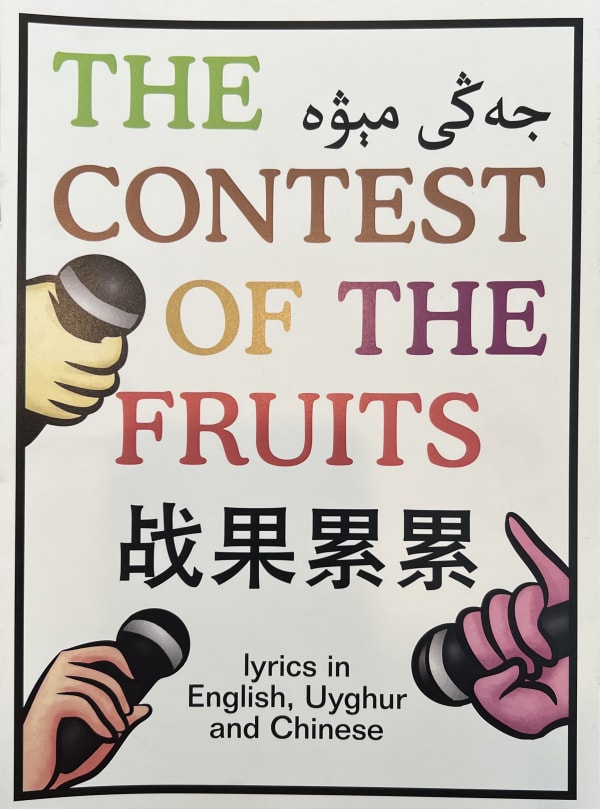
Slavs and Tatars: The Contest of the Fruits (Lyrics)
2021 Read more -
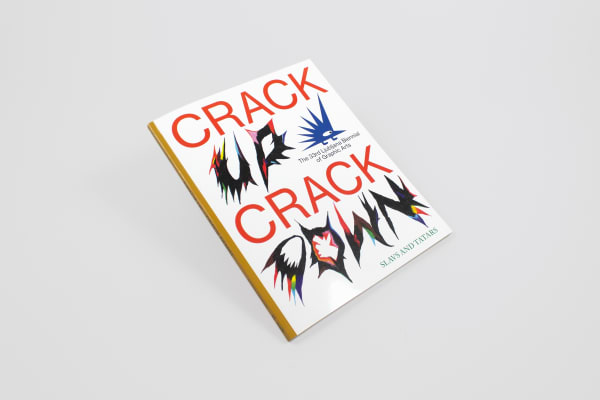
Slavs and Tatars: Crack Up – Crack Down
The 33rd Ljubljana Biennial of Graphic Arts Hamja Ahsan, Emily Apter, M. Constantine, David Crowley, Arthur Fournier & Raphael König, Augustin Maurs, Metahaven, Alenka Pirman & KULA, Mohammad Salemy, Vid Simoniti, Slavs and Tatars, Goran Vojnović, 2019softcover, 122 pages pagesRead more
Publisher: Mousse Publishing,
Dimensions: 23 × 28.4 cm -
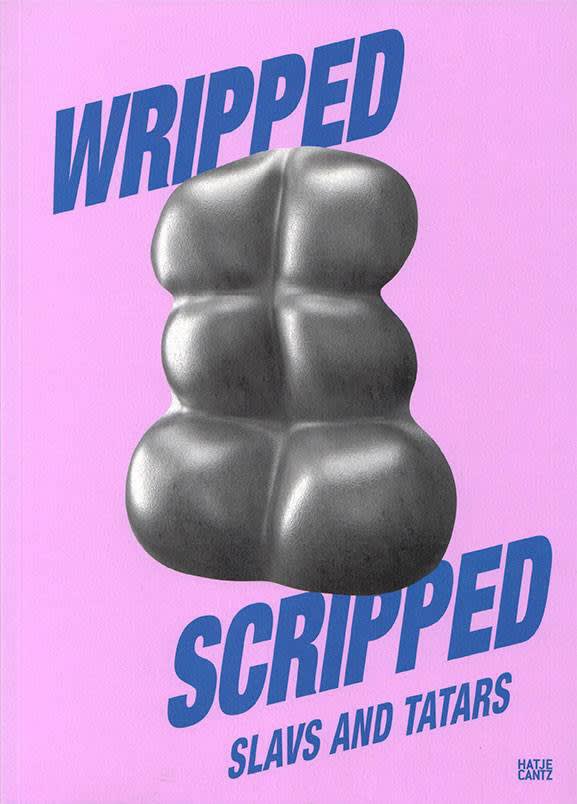
Slavs and Tatars: Wripped Scripped
Slavs and Tatars, 2018softcover, 152 pages pagesRead more
Publisher: Hatje Cantz
Dimensions: 20.5 × 28.5 cm -

Slavs and Tatars: Kirchgängerbanger
Slavs and Tatars, 2018 Read more -

Slavs and Tatars: Mouth to Mouth
Sussan Babaie, Jörg Heiser, David Joselit, Pablo Larios, 2017hardcover, 224 pagesRead more
Publisher: Koenig Books
Dimensions: 320mm x 240mm -

Friendship of Nations: Polish Shi’ite Showbiz
Slavs and Tatars, Adam Michnik, Michael D. Kennedy, Ramin Jahanbegloo, Mara Goldwyn, Shiva Balaghi, Agata Araszkiewicz, 2017Softcover, 184 pages pagesRead more
Publisher: Book Works, London
Dimensions: 210 x 260 mm -
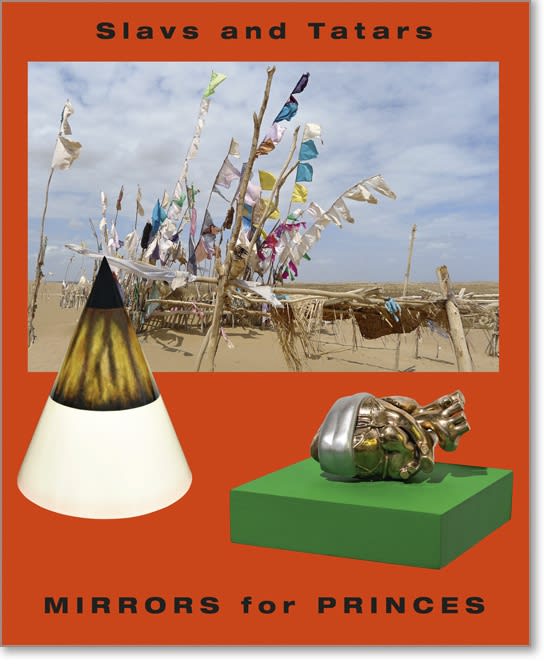
Slavs and Tatars: Mirrors for Princes
Manan Ahmed Asif, Maya Allison, David Crowley, Anna Della Subin, Anthony Downey, Lloyd Ridgeon, Beatrix Ruf, Slavs and Tatars, Neguin Yavari, 2015softcover, 192 pages pagesRead more
Publisher: JRP Editions & NYU Abu Dhabi Art Gallery
Dimensions: 205 x 250 mm -
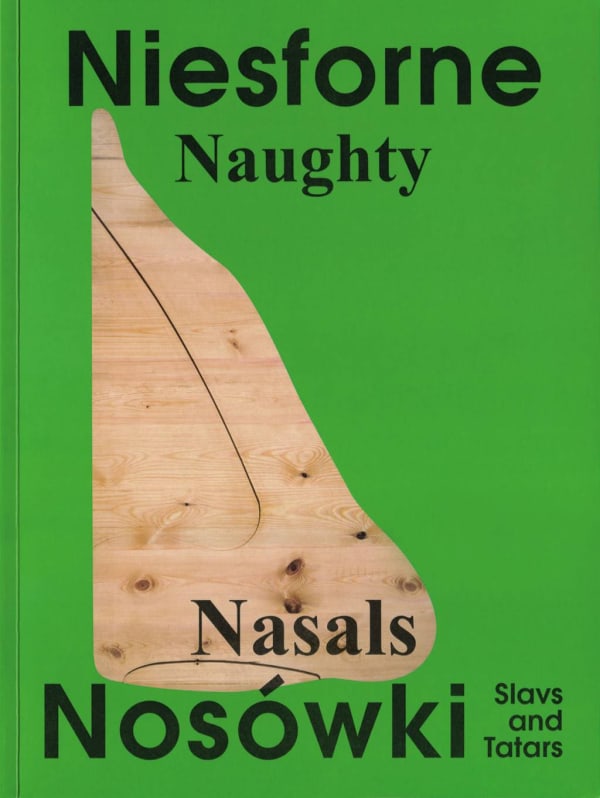
Slavs and Tatars: Naughty Nasals
Slavs and Tatars, 2014softcover, 80 pages pagesRead more
Publisher: Motto Books, Geneva
Dimensions: 23 x 31 cm -

Slavs and Tatars: Khhhhhhh
Slavs and Tatars, 2012softcover, 64 pages pagesRead more
Publisher: Mousse Publishing, Milan
Dimensions: 23 x 31 cm -

Slavs and Tatars: Not Moscow Not Mecca
Slavs and Tatars, Norman O. Brown, Franz Thalmair, 2012softcover, 108 pages pagesRead more
Publisher: Secession, Wein, Germany
Dimensions: 230 x 310 mm -
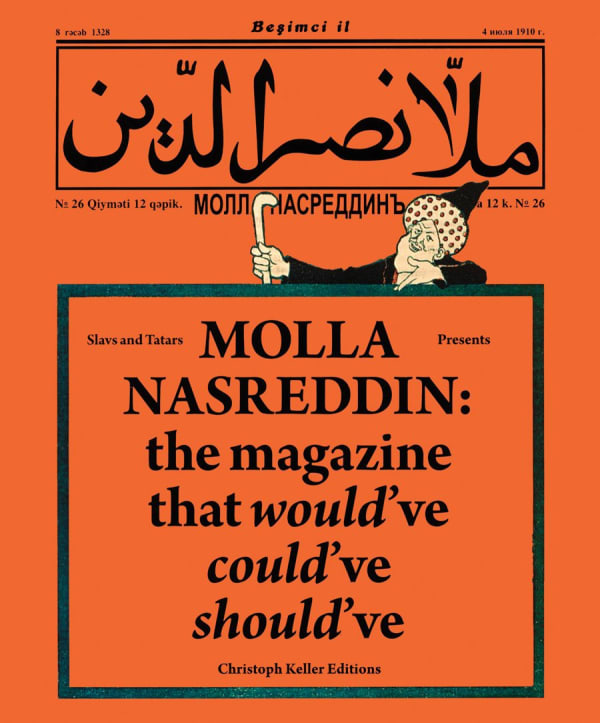
Slavs and Tatars: Molla Nasreddin: The Magazine That Would've, Could've, Should've
Slavs and Tatars, 2011softcover, 208 pages pagesRead more
Publisher: JRP Editions, Zurich
Dimensions: 240 x 280 mm -

Slavs and Tatars: 79.89.09.
Slavs and Tatars, Jane Rolo, Gavin Everall, 2011unbound, 44 pages pagesRead more
Publisher: Book Works, London
Dimensions: 420 x 300 mm -

Slavs and Tatars: Kidnapping Mountains
Slavs and Tatars, Victoria Camblin, Payam Sharifi., 2009Softcover, 96 pages pagesRead more
Publisher: Book Works, London
Dimensions: 20 x 26 cm


